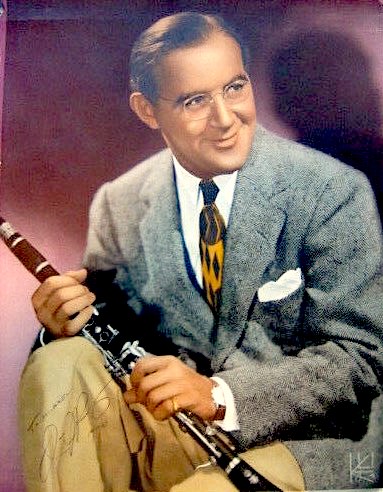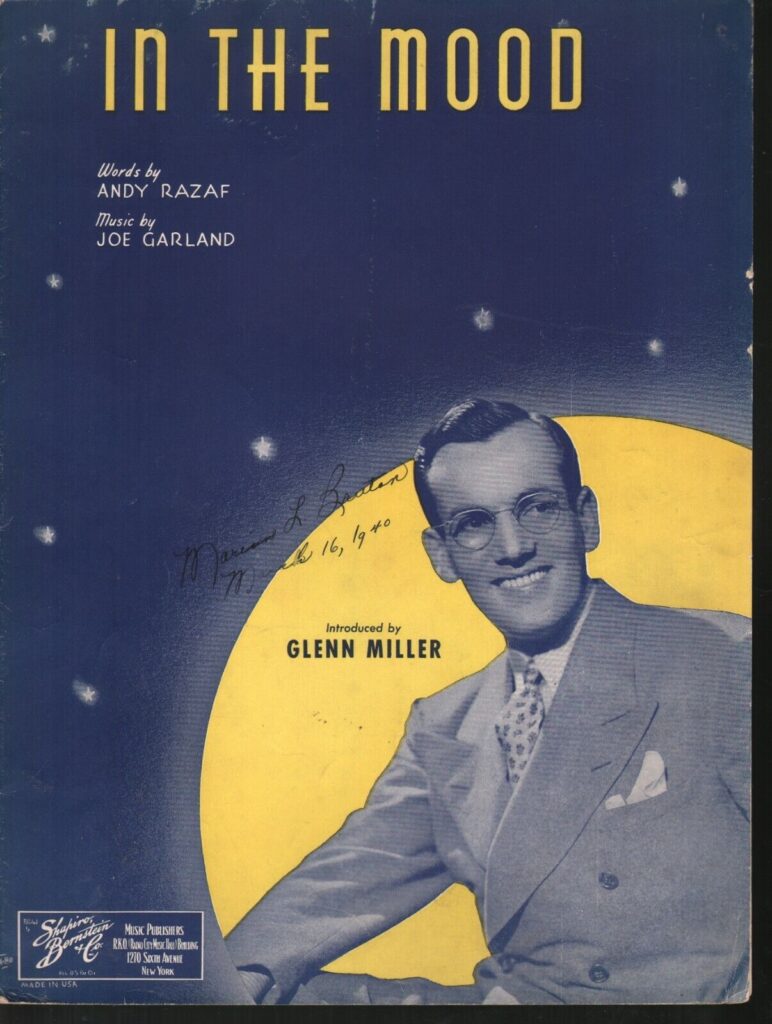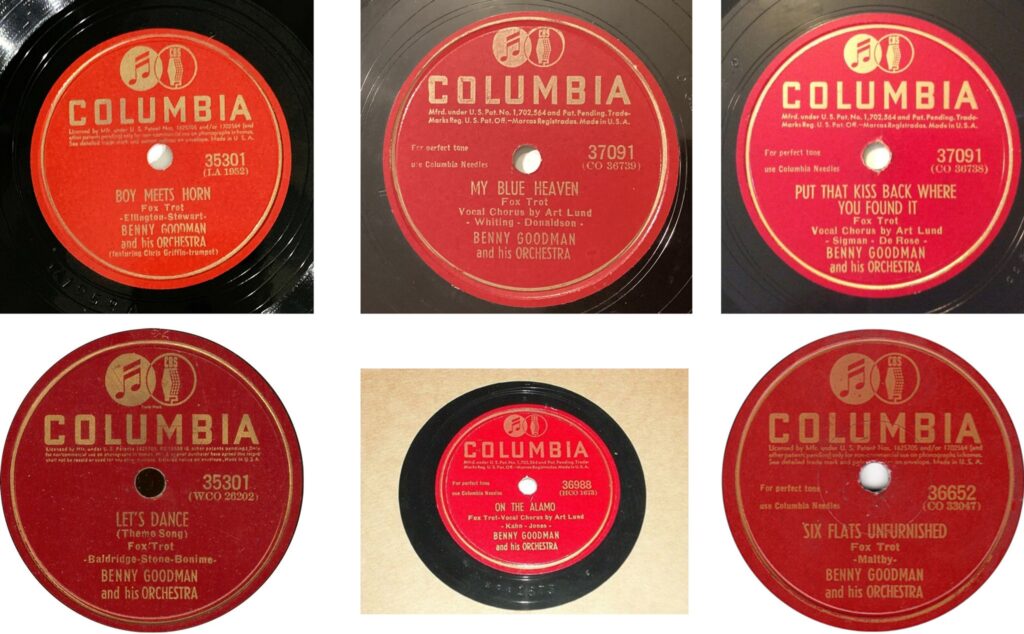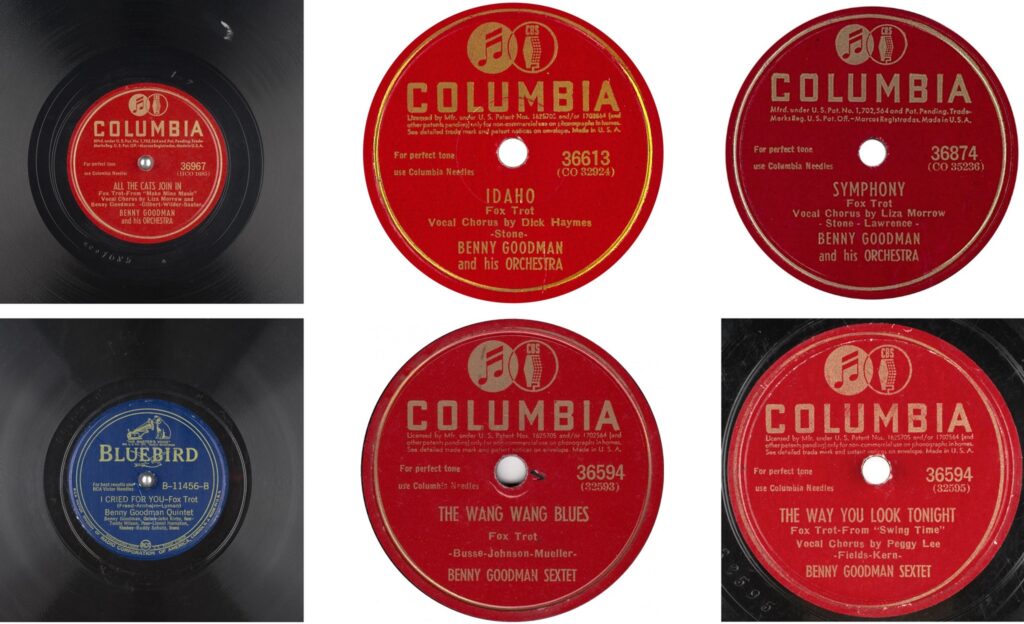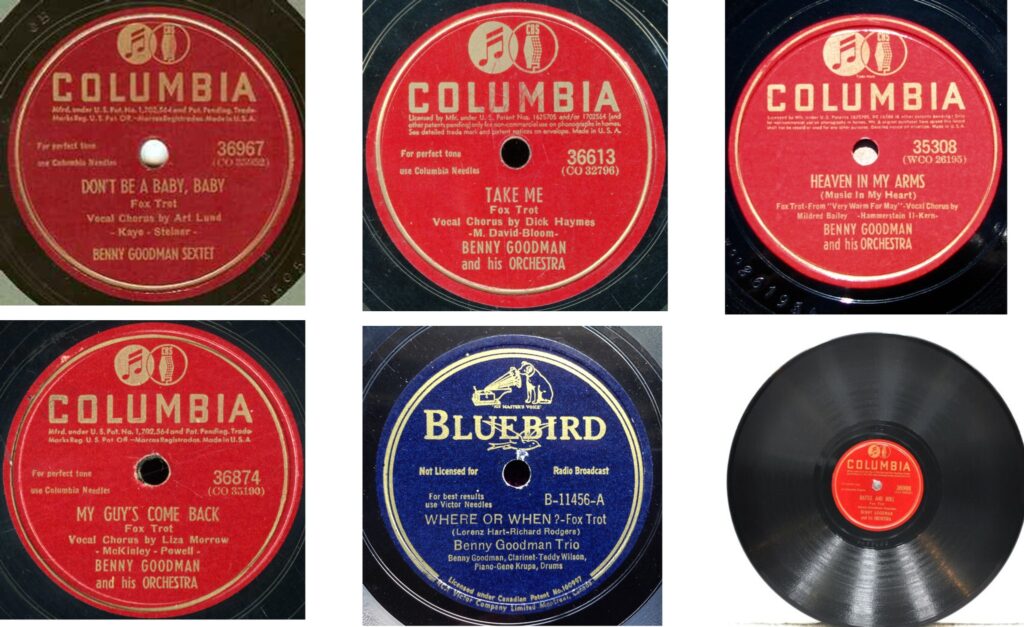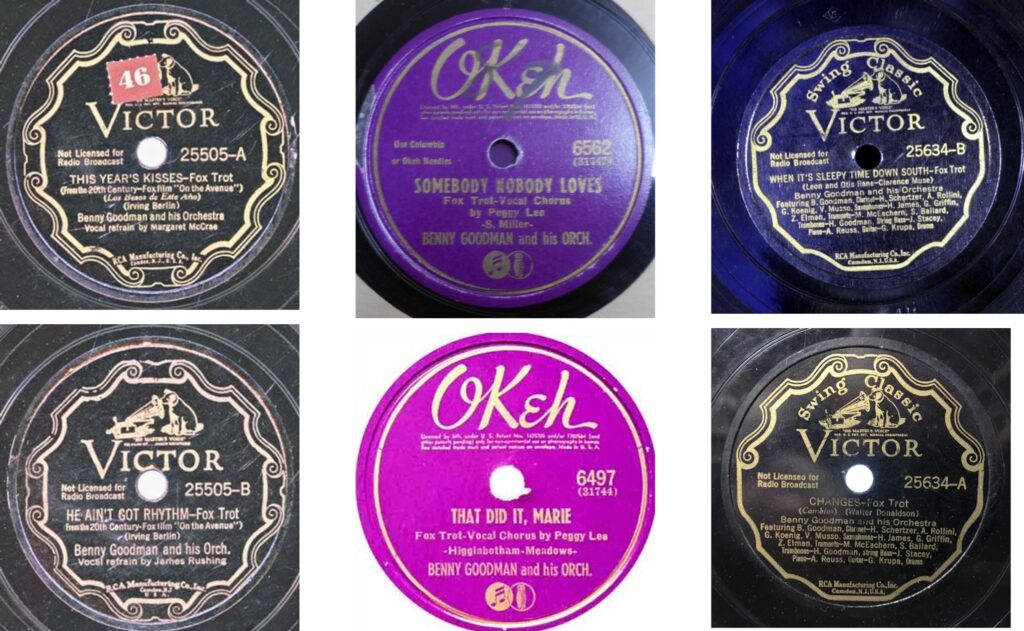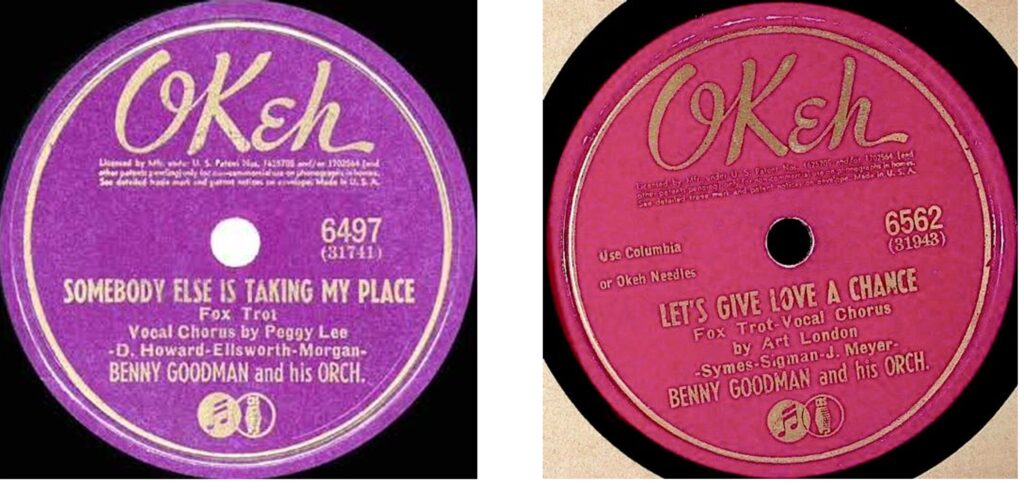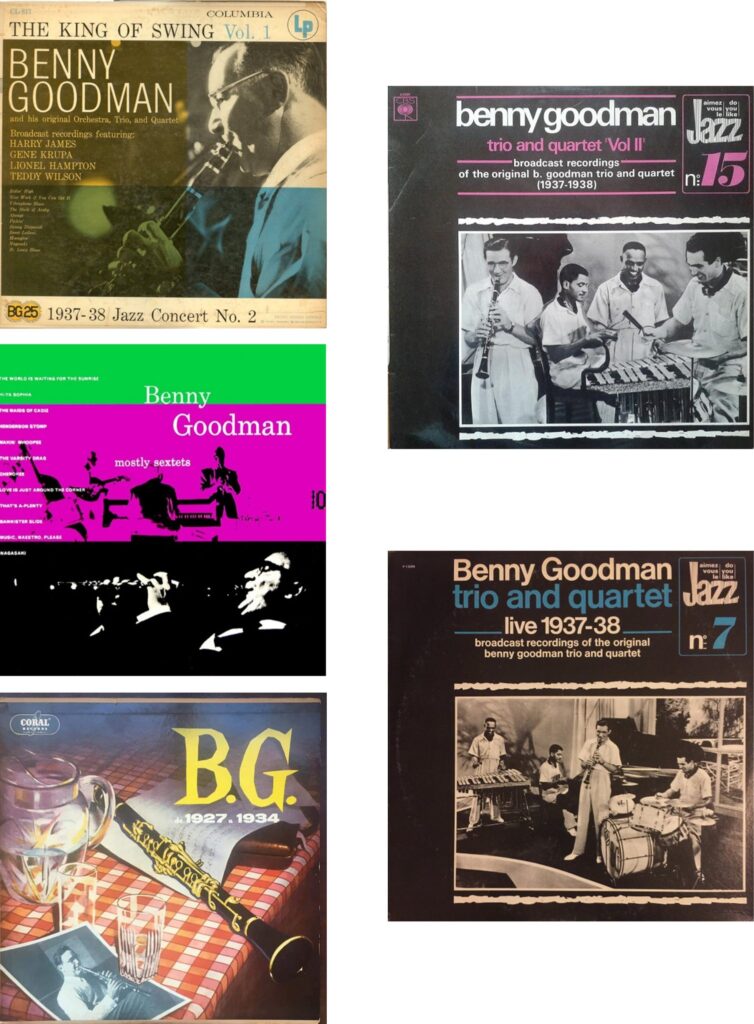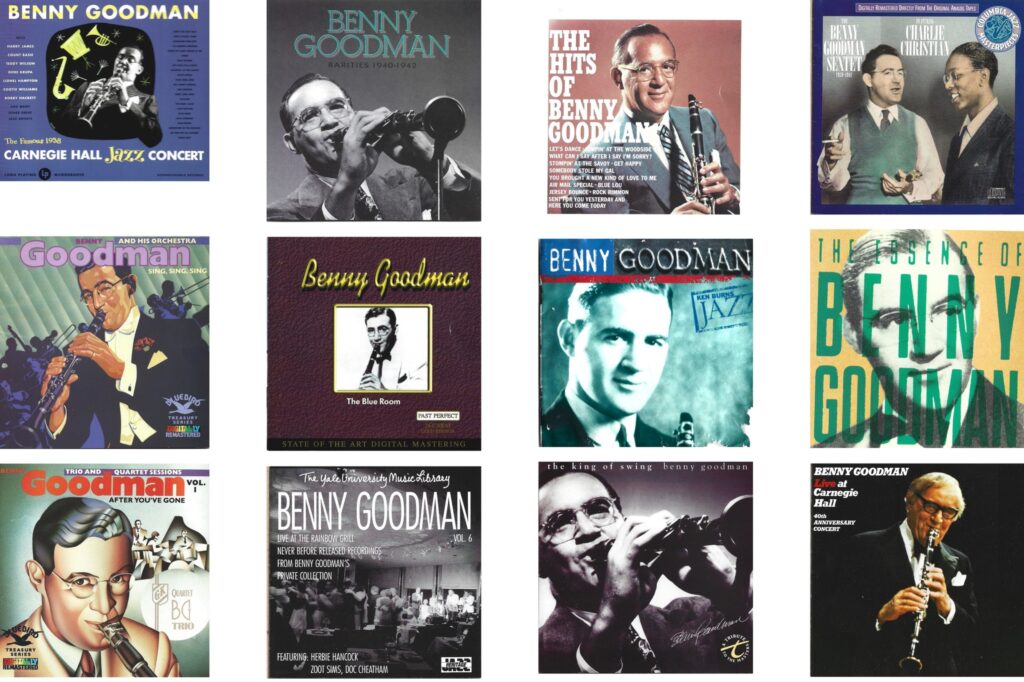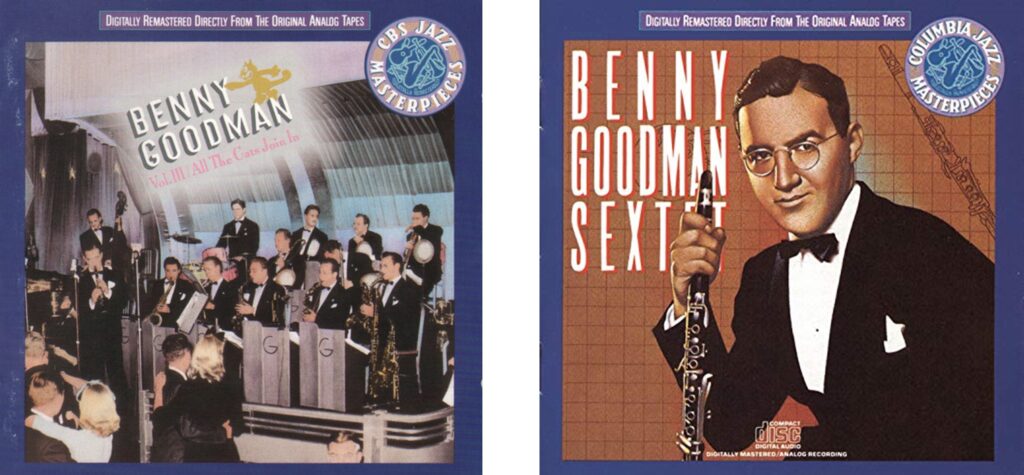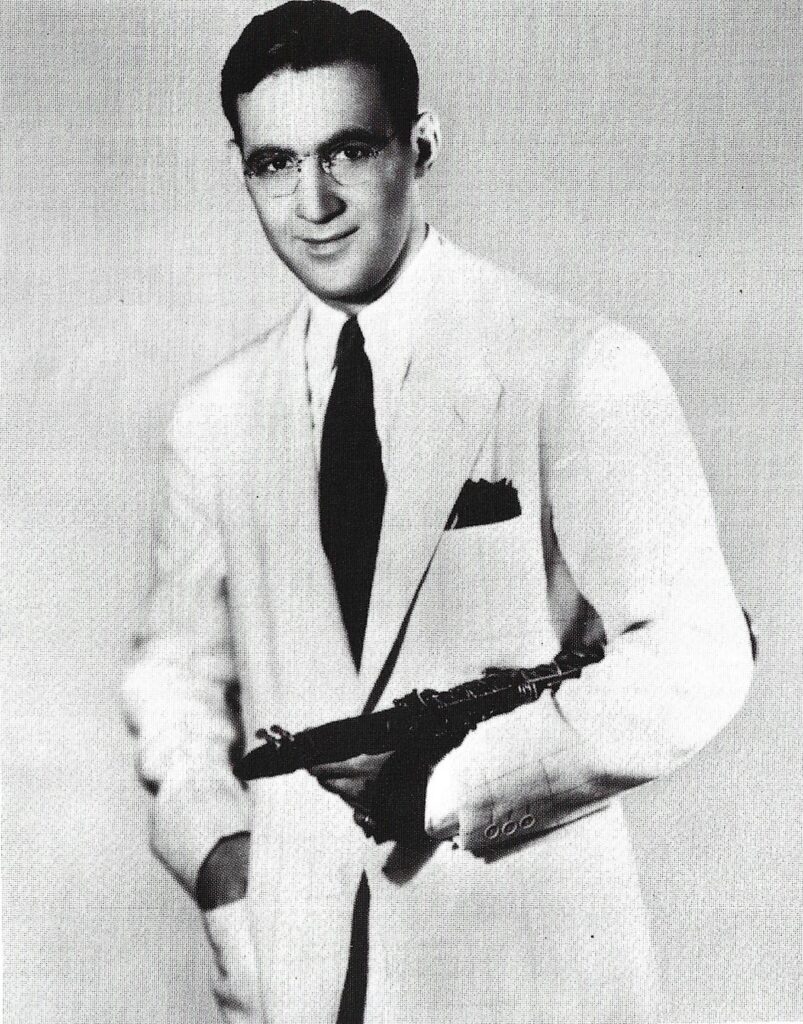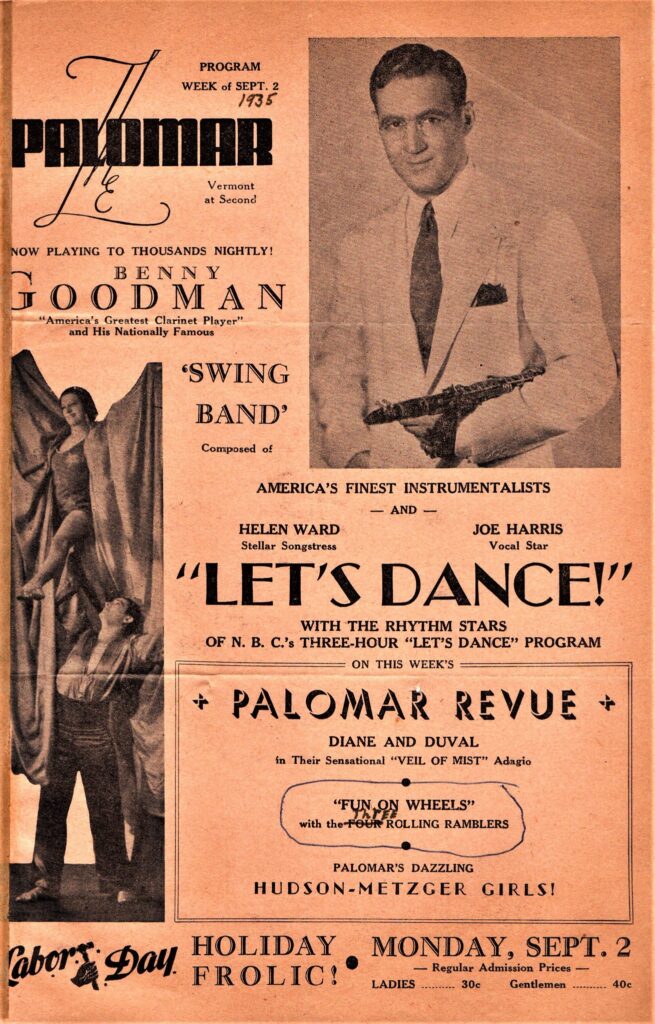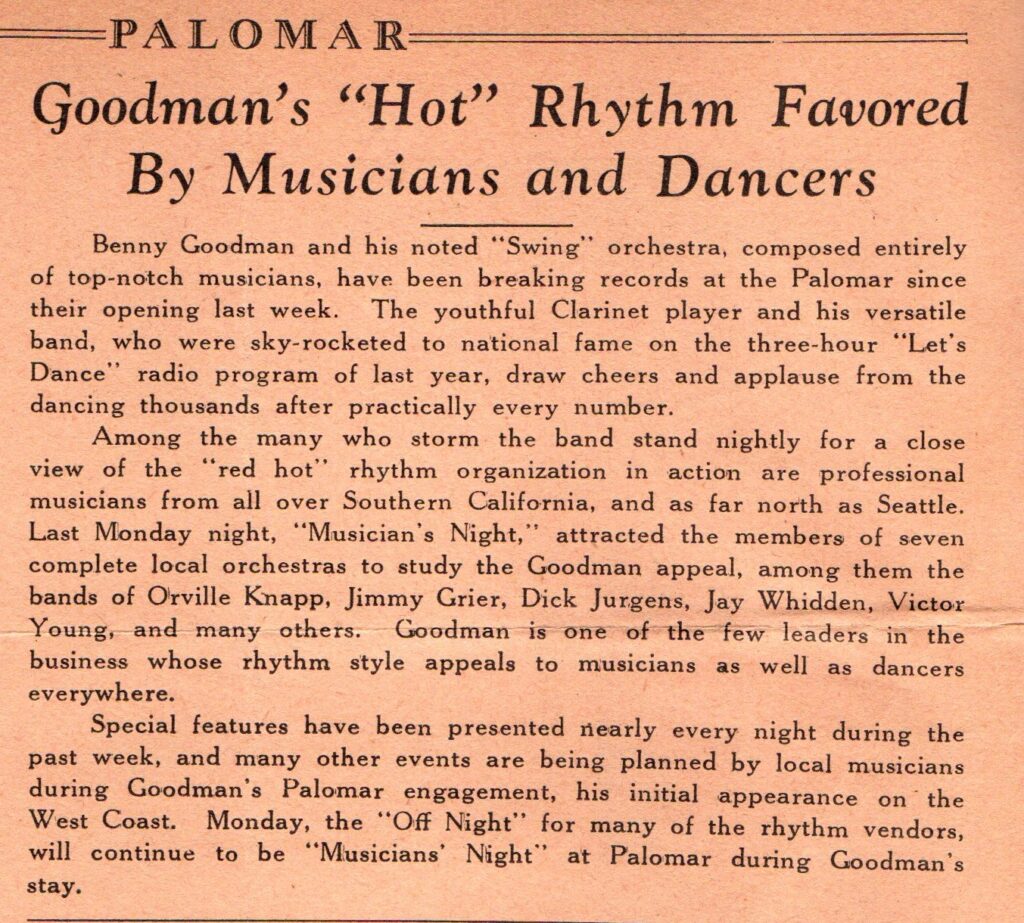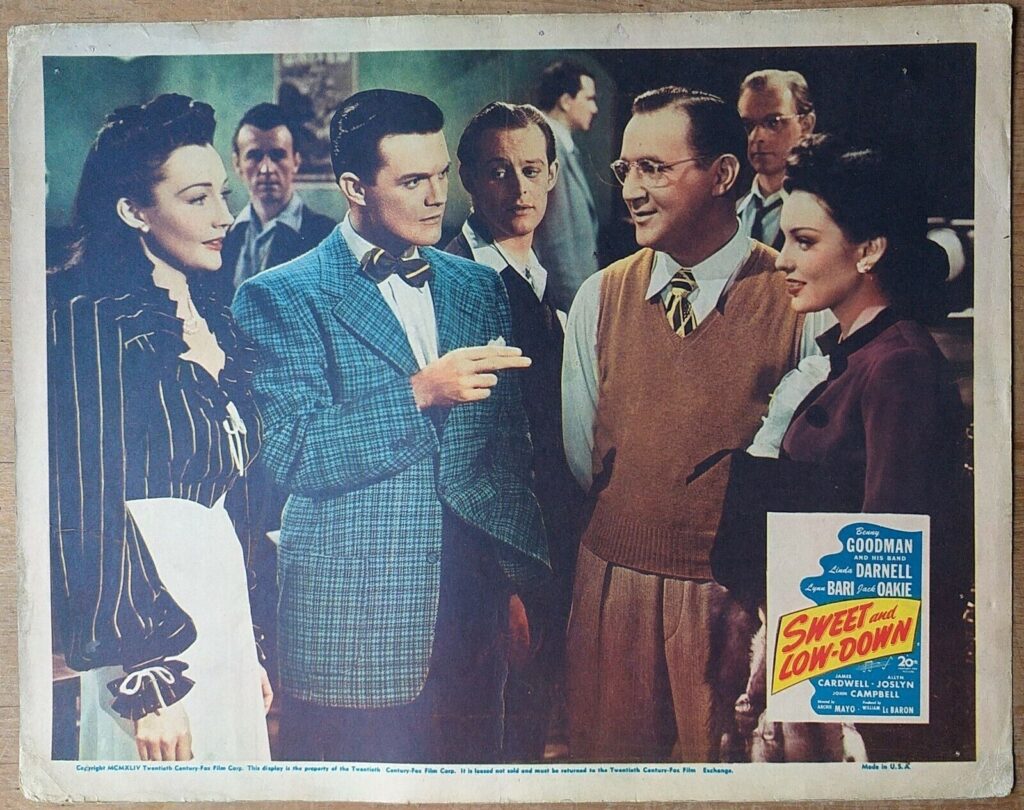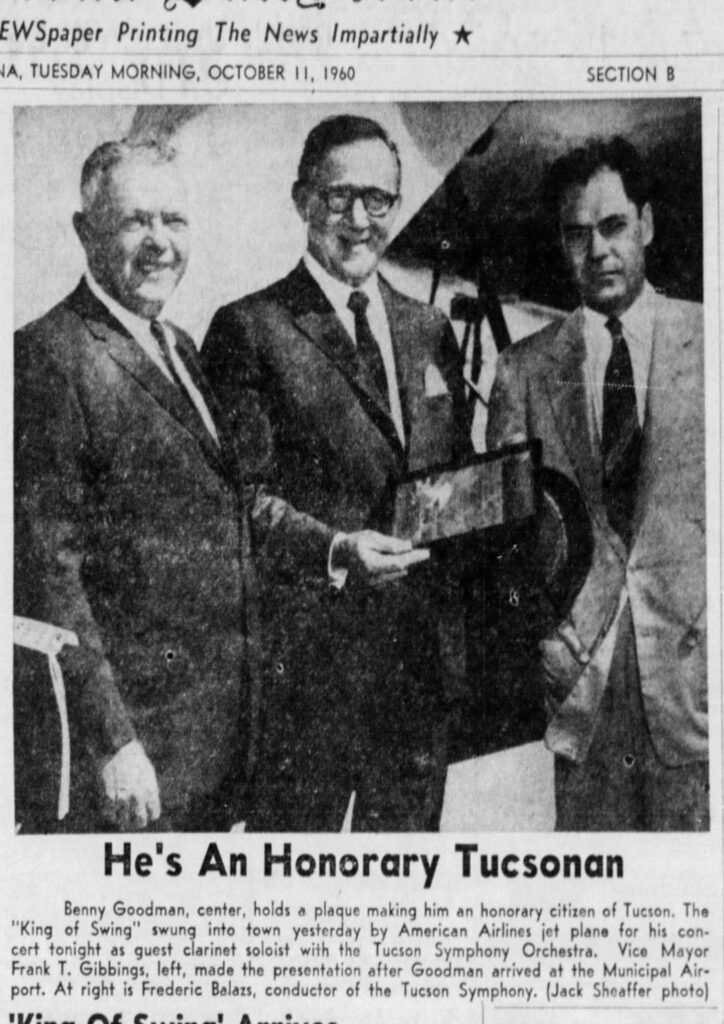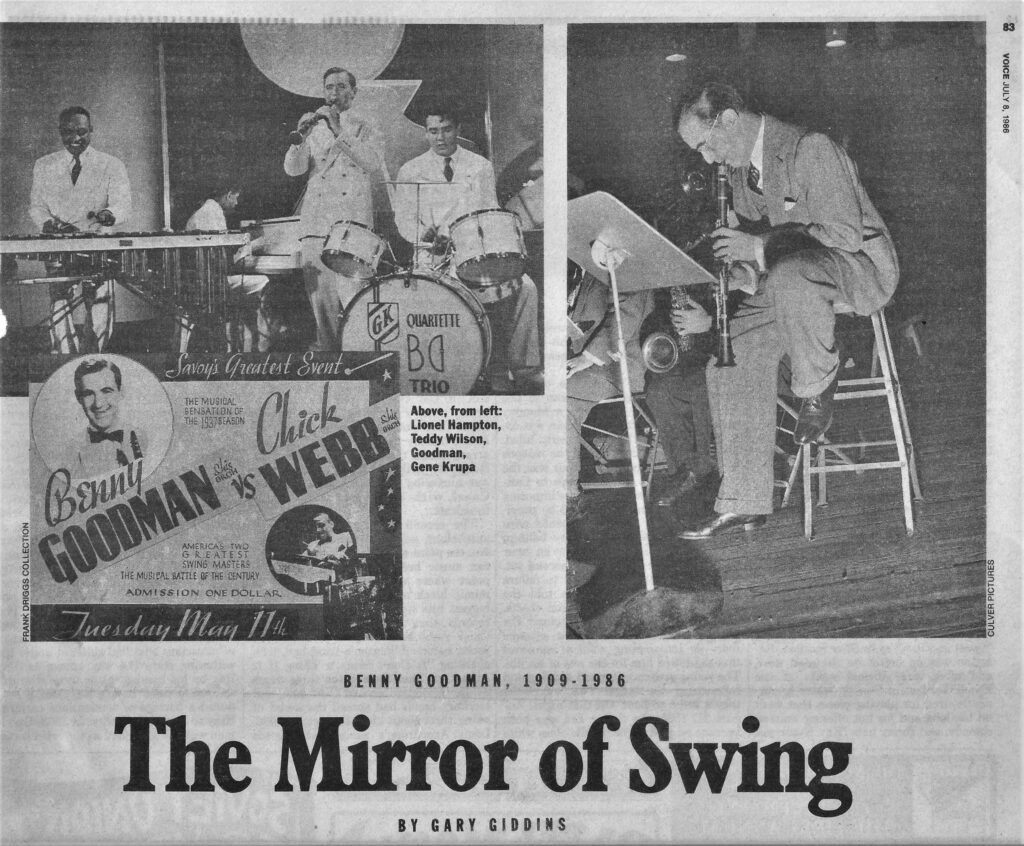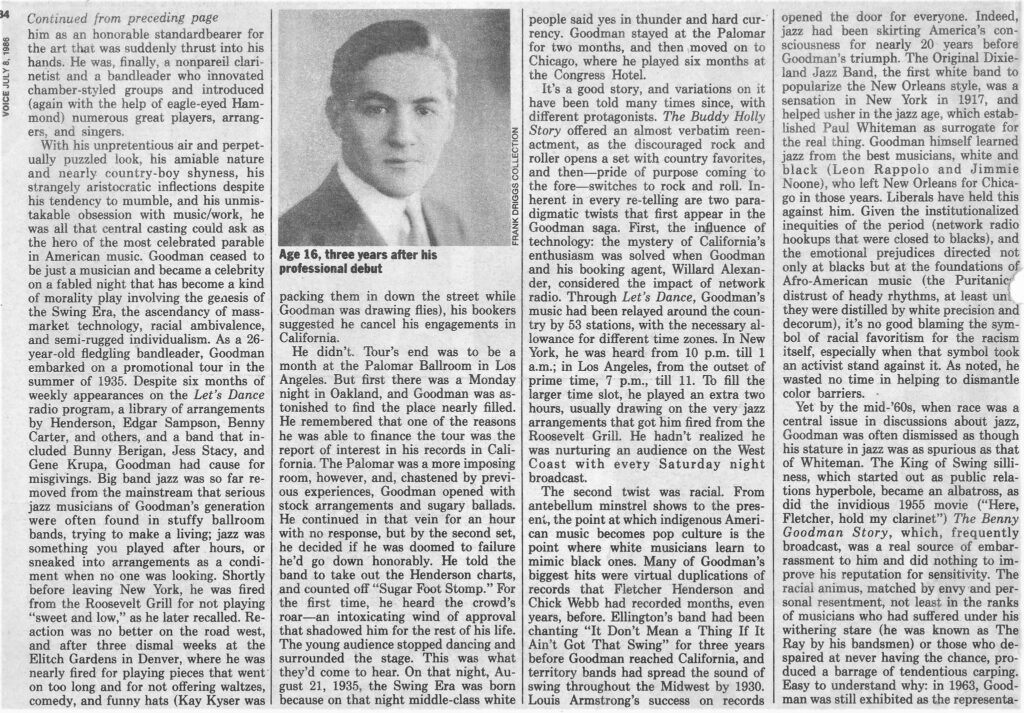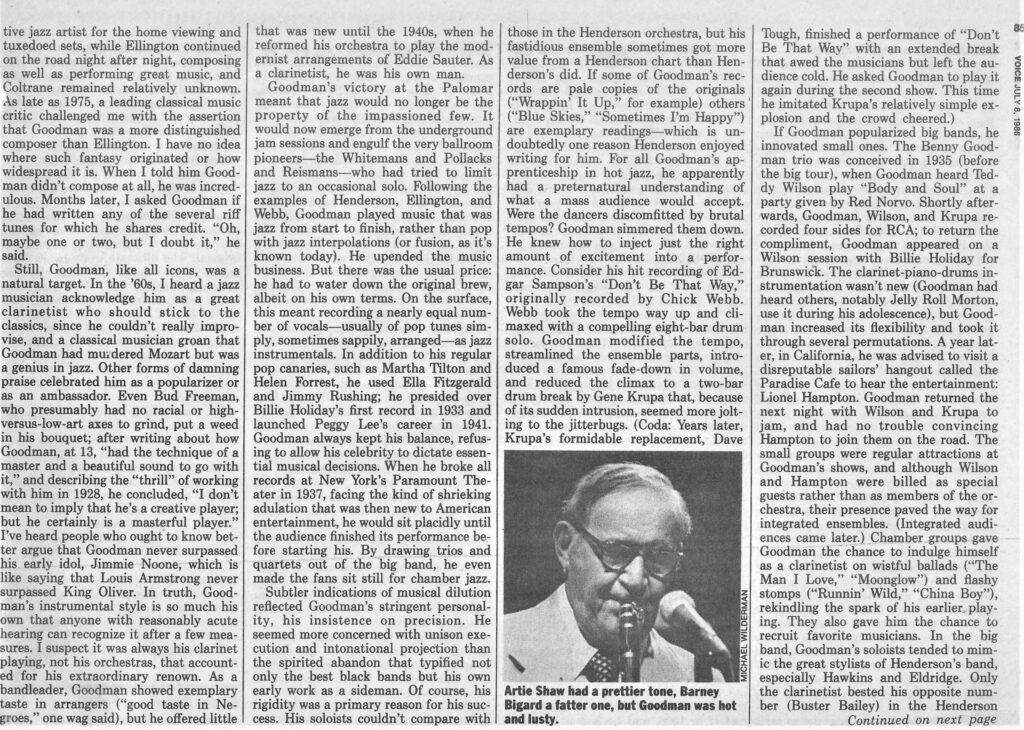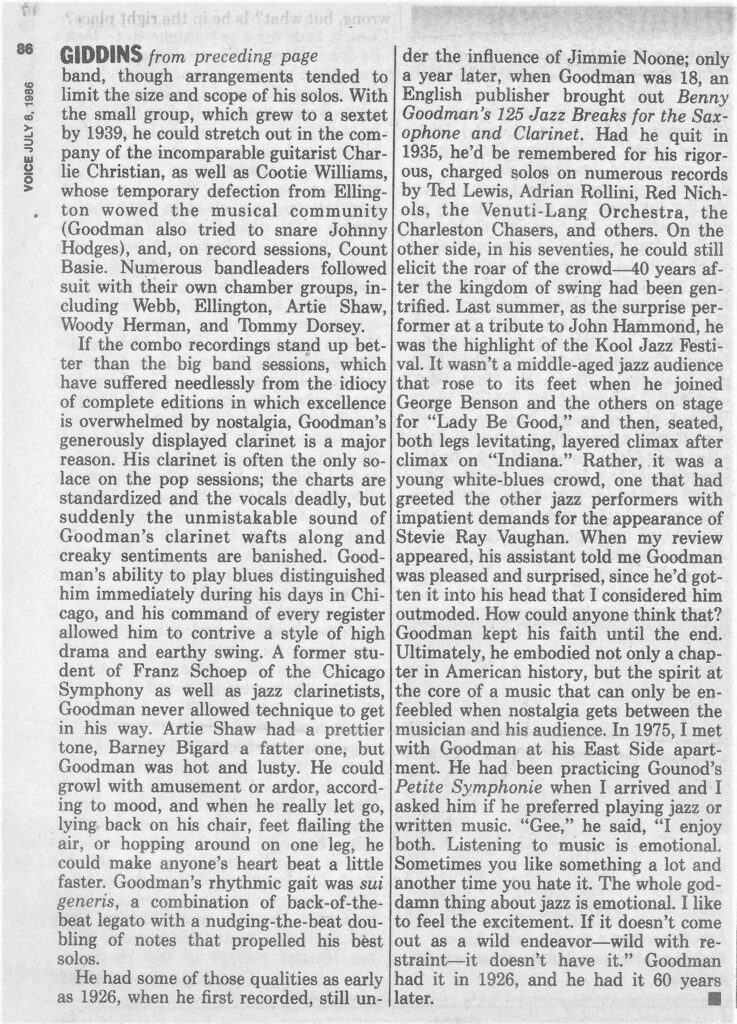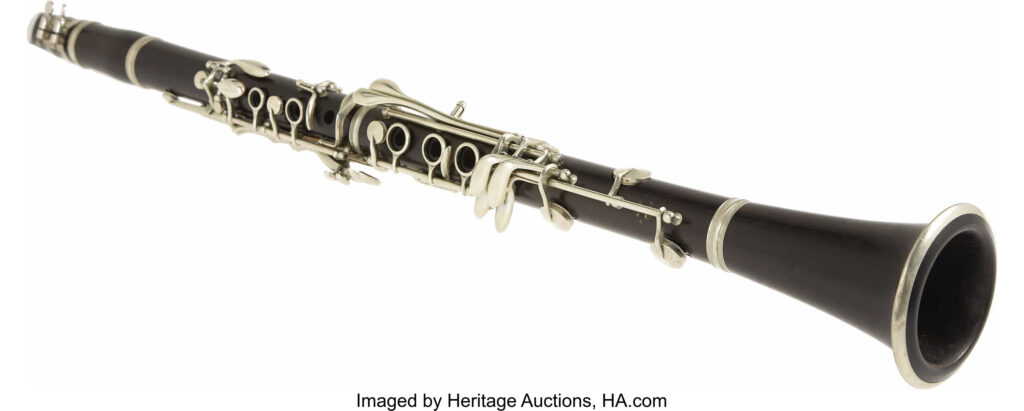My first eight years of schooling took place in the public schools. I started learning the cello in the 4th grade at Robison Elementary School, using an instrument provided by the school. I continued playing while at Mansfeld Junior High, and really came to love it. I even went to music summer camp one year at the University of Arizona, and was beginning to get better and better at playing, even though I never had private lessons.
All of my brothers and sisters attended Tucson High School, and I was expecting to do the same. Instead, however, I begged my parents to let me go to Salpointe, a private Catholic school with a great academic reputation, but no orchestra. Sadly, the move to Salpointe meant that I had to give up playing the cello, because my parents could not afford to buy me one of my own, and there was nowhere else to play the instrument. I hadn’t heard of Tucson Junior Strings, a local youth orchestra that I could have joined, but even if I had, I likely would not have been able to participate because of the costs involved. Going to Salpointe was going to stretch my parents’ budget beyond what they could afford as it was.
During orientation at Salpointe, the band director recruited me and encouraged me to try the saxophone. I really didn’t know much about the instrument, but I really liked the saxophone solos I had heard on the pop tunes of the late fifties and early sixties. Songs like Tequila, the Twist and the Mashed Potato featured saxophone solos that really helped make the tunes come alive. So I gave it a try.
At first, I played the tenor saxophone, and later the alto, using instruments provided by the school. The band director at one point bought a brand new alto and let me be the first to play it. I liked it a lot and took to it quickly. Before long, I had learned how to play the song “In the Mood”, made famous years ago by the Glenn Miller Orchestra. As I think back, this was really my first exposure to the music of the swing era. I didn’t really know any other songs from that time period, except for maybe Boogie Woogie Bugle Boy by the Andrews Sisters. Everyone knew those tunes. Sometimes there would be commercials on tv advertising the music of the big band era, and while it sounded intriguing, I didn’t go crazy over it. This was the music of my parents, so it was considered old-fashioned.
Once I started earning money my junior year of high school, I began to collect record albums, and expanded my musical interests in many directions. Around the time I started college, I began listening to jazz. I have been collecting jazz recordings and books for many years now. My love of the music of Billie Holiday and Ella Fitzgerald, and my reading about their lives led me to the swing era, and I learned a little bit about all the great musicians of the time, and a few of the orchestras. I knew that the Chick Webb Orchestra, for example, was one of the best swing bands of the era, and that Ella Fitzgerald worked with him when she first started singing. I also knew that Billie Holiday worked with both the Count Basie band and the Artie Shaw orchestras, and had recorded with Benny Goodman and Teddy Wilson at the start of her career. And, of course, I knew about Glenn Miller and “In the Mood”. However, I was never a fanatic about swing era music to the point where I collected everything I could find and knew the repertoire of all the great bands. It wasn’t until recently that I realized what an impact this music had on American culture. Swing was a real phenomenon. It was huge. The youth of America went crazy over it.
Benny Goodman was always one of those musicians in whom I was interested, and when I was collecting 78’s, I found a lot of his recordings. I didn’t know a whole lot about him or the details of his life and work, however, except that Peggy Lee worked with him in the early 1940s and that he was known as the “King of Swing”. On a whim, I recently decided to read a biography about him by James Lincoln Collier. The book was titled, “Benny Goodman and the Swing Era”. I found the book fascinating and especially liked reading about Chicago and New York in the 1920s and 1930s, how the Great Depression affected popular culture, and how popular music made a comeback in the mid-30s, in large part due to the popularity among American youth of Benny Goodman and his Orchestra. The musical analysis provided in the book was a bit beyond me, but I made it a point to listen to Goodman’s music along the way, and I watched a lot of videos of Goodman and his band. The most fascinating were the ones that included Gene Krupa, the famous drummer and bandleader. That guy was a bundle of energy. His playing on the tune “Sing, Sing, Sing” is just outrageous!
I’ve been intently listening to Goodman’s work for the past few months, and I must admit I like his early work (mid to late 30s) better than what he recorded in the latter part of the 40s. The trio and quartet material is great too, as are the tunes he recorded when Peggy Lee was his vocalist in the early 40s. As bebop became more popular in the 40s, Goodman tried to incorporate it, but it just doesn’t sound right to me. The high pitch of the clarinet and the band playing at full throttle on tunes that are more dissonant and experimental in nature, sounds awful to my ears. I know everyone has their own tastes and preferences, however. By the mid-40s, interest in swing had faded, and more attention was paid to individual performers, particularly singers. Goodman never stopped recording or performing, but he reached his peak as early as 1940, and was never able to get “back on top” again, so to speak.
I’ve put together some materials in my collection. I purchased most of the cds on Ebay while I was reading the biography, but I’ve had the albums for many years, and I have more 78s in storage that I need to find. I even have an extended play (these feature two songs on each side, rather than one) 45rpm record that I just dug out from my 45’s collection. I didn’t realize until I started looking, how many books about Benny Goodman and the swing era were already in my collection. I now have 5 Goodman biographies, after having purchased two on Ebay recently. I even have a glossy, 8 x 10, autographed portrait. I’m not sure the signature is real or if the portrait was published with the signature on it, but it doesn’t matter. I’ve put everything together and wow, I’ve got a very nice collection!
I was saddened to learn that many of his fellow musicians thought Goodman was such a jerk in real life. Collier alludes to this several times in his biography, but never really goes into any depth. However, toward the end of the book,he makes reference to a publication called “Jazzletter” and a very revealing four-part series about the Benny Goodman tour of the USSR in 1962, written by a member of the band. The story, which I found available online in Jazzletter, (see below), was quite revealing. Goodman’s band members thought he was a tightwad, aloof and bad-mannered, and that he always needed to be top dog, in the spotlight at all times.
I’ve since read other material about Goodman, and have learned that John Lincoln Collier’s biography leaves out a lot of interesting information, such as the fact that Goodman performed in concerts for various progressive causes, and that his role as a band leader with an integrated ensemble was groundbreaking and had an impact that was felt far and wide. It helped to bring down at least some of the racial barriers in place at the time in American entertainment. His defense of fellow musician Gene Krupa, who was busted and jailed for possession of marijuana also stands out as a noble act. He publicly stated after Krupa was released that he could play in his band any time. Goodman’s brother-in-law, John Hammond was immersed in the American left, and he undoubtedly influenced Goodman to take risks he may not have otherwise taken.
In the end, Goodman’s music has stood the test of time, and is absolutely wonderful.
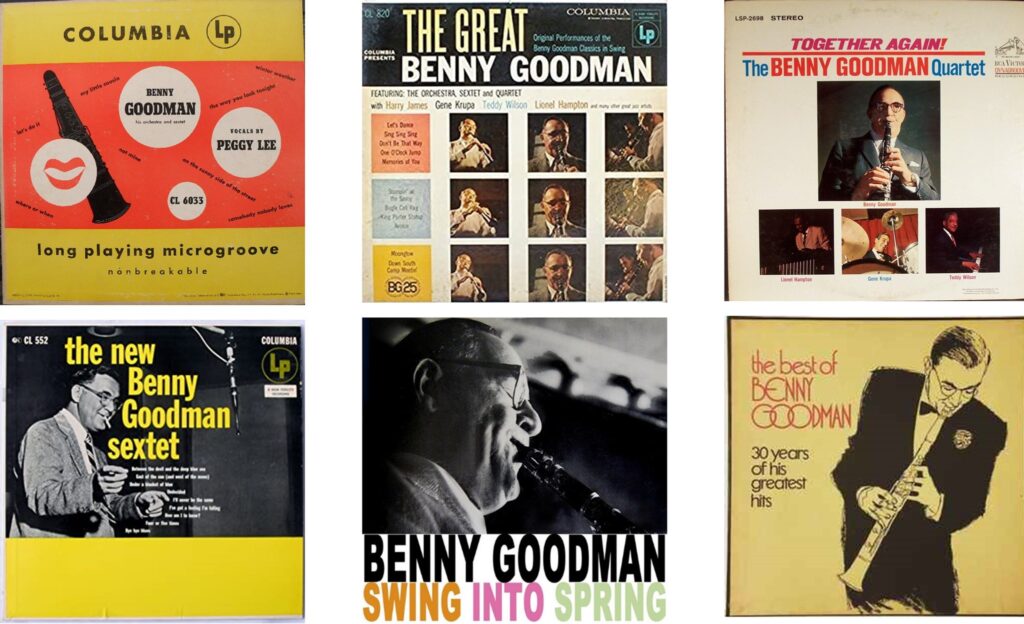
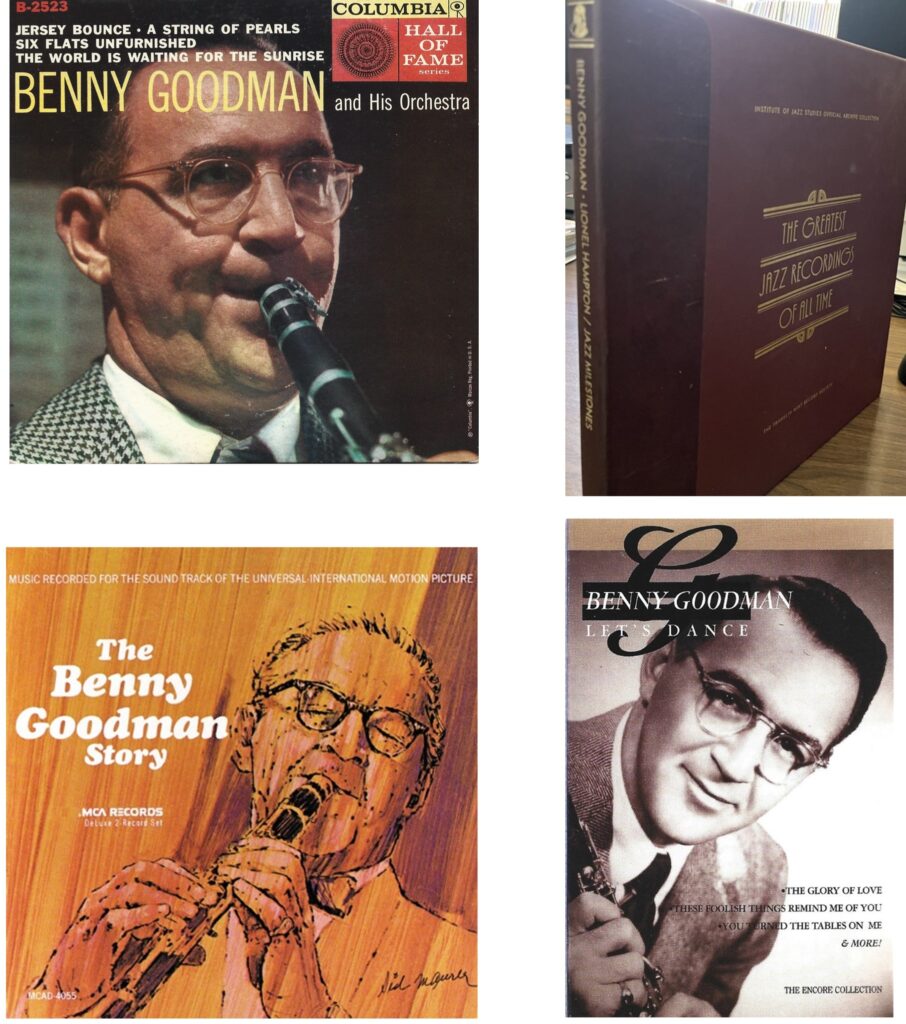
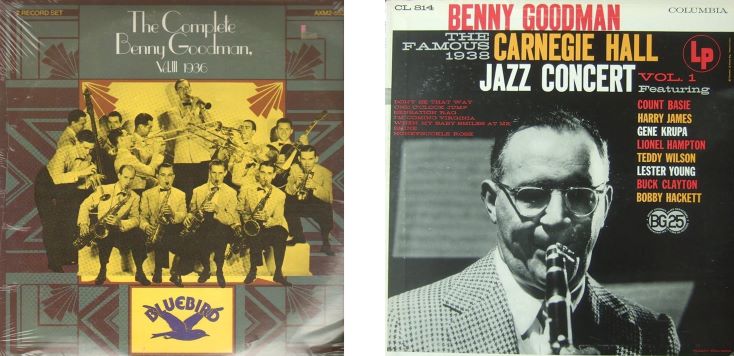

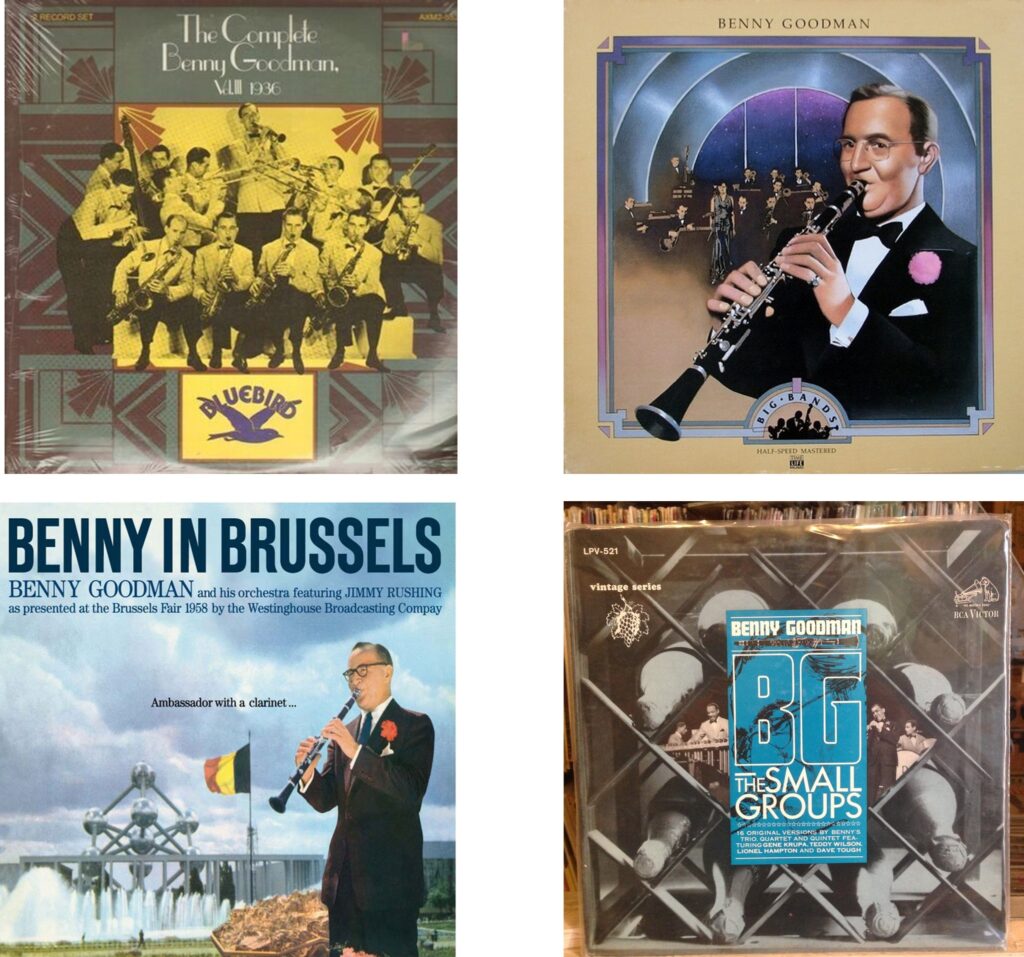
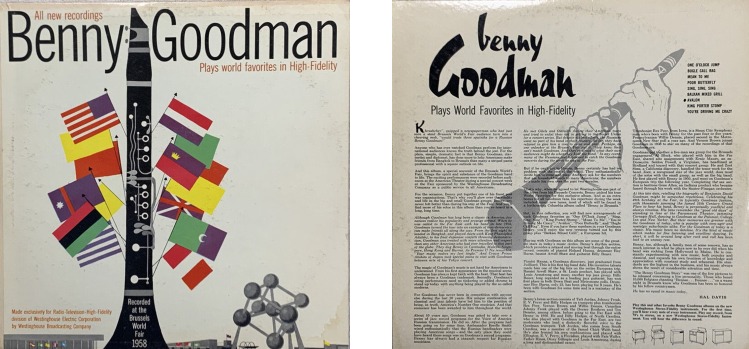
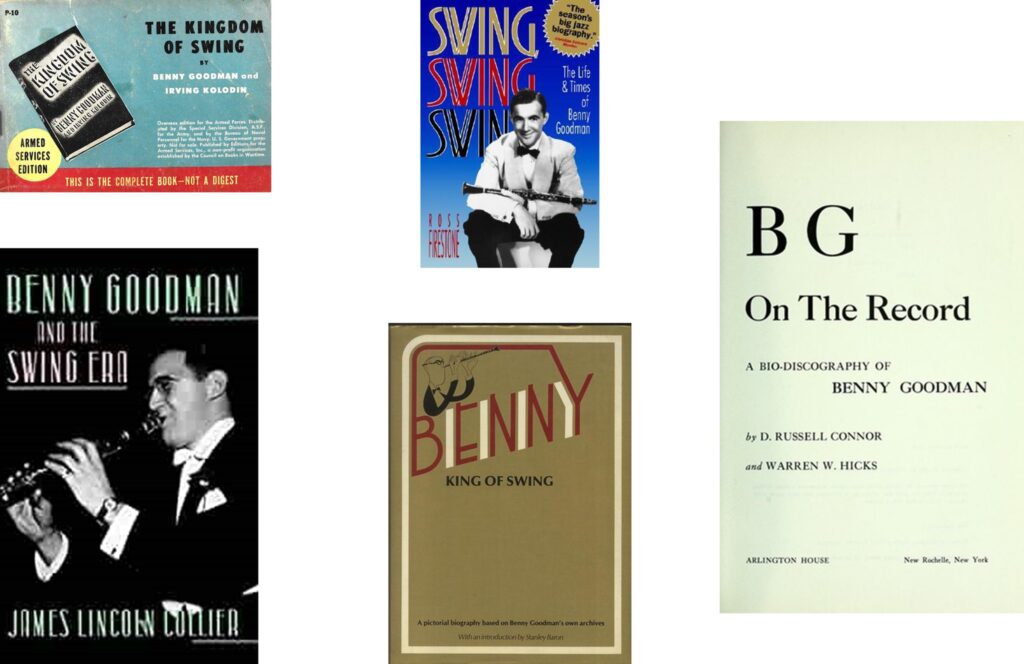
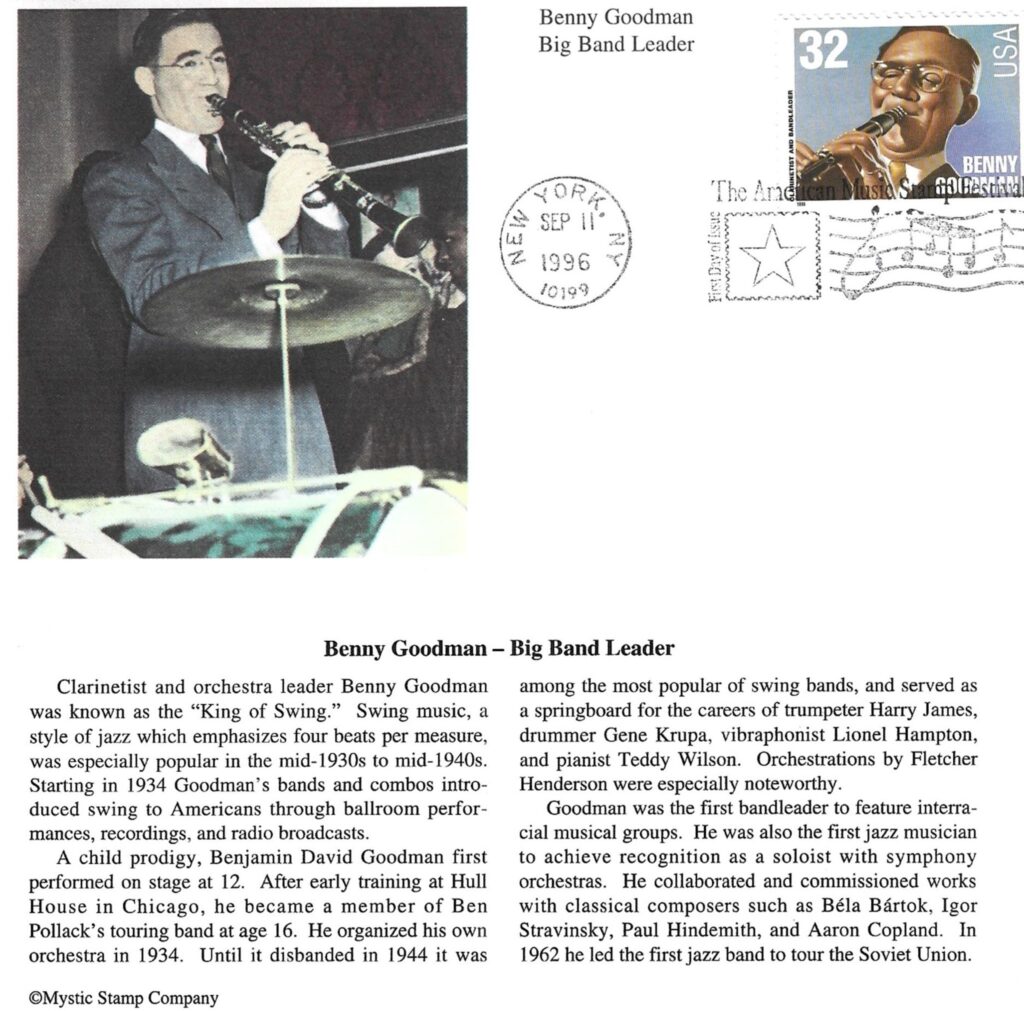
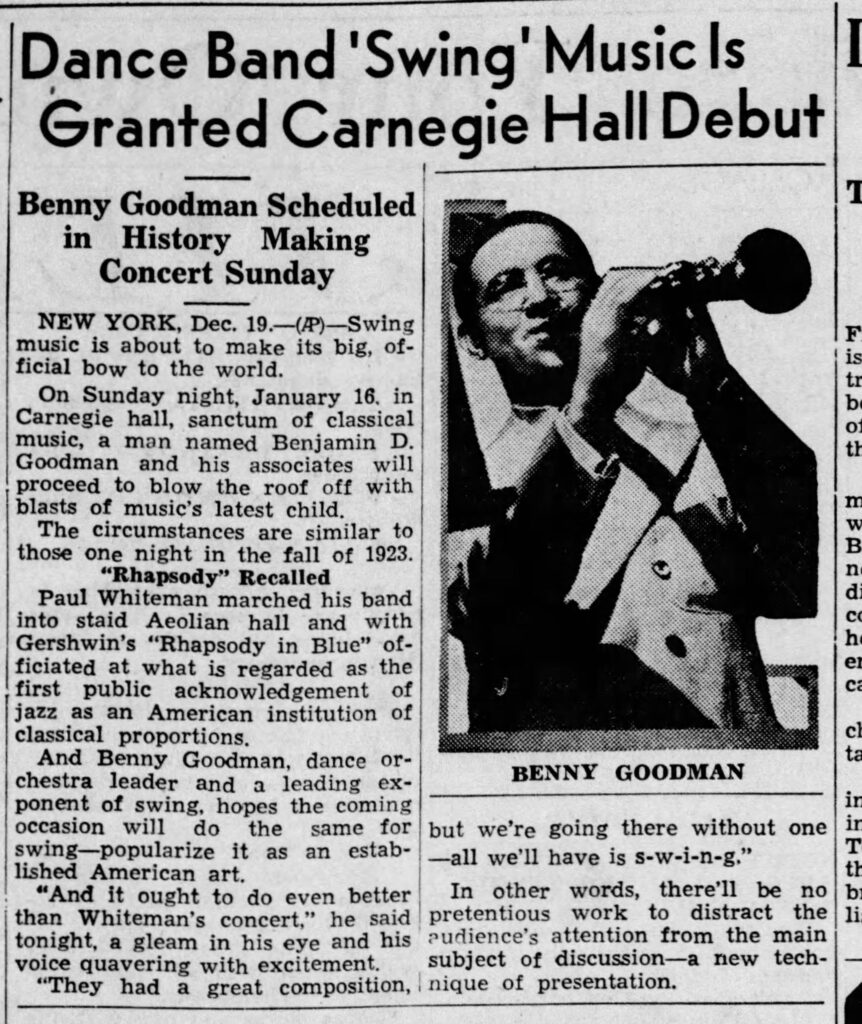
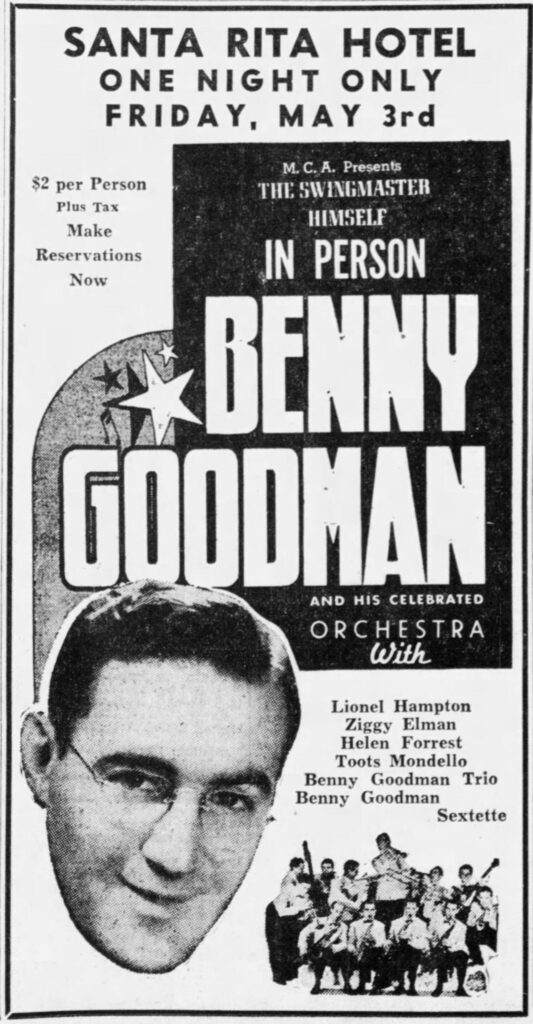


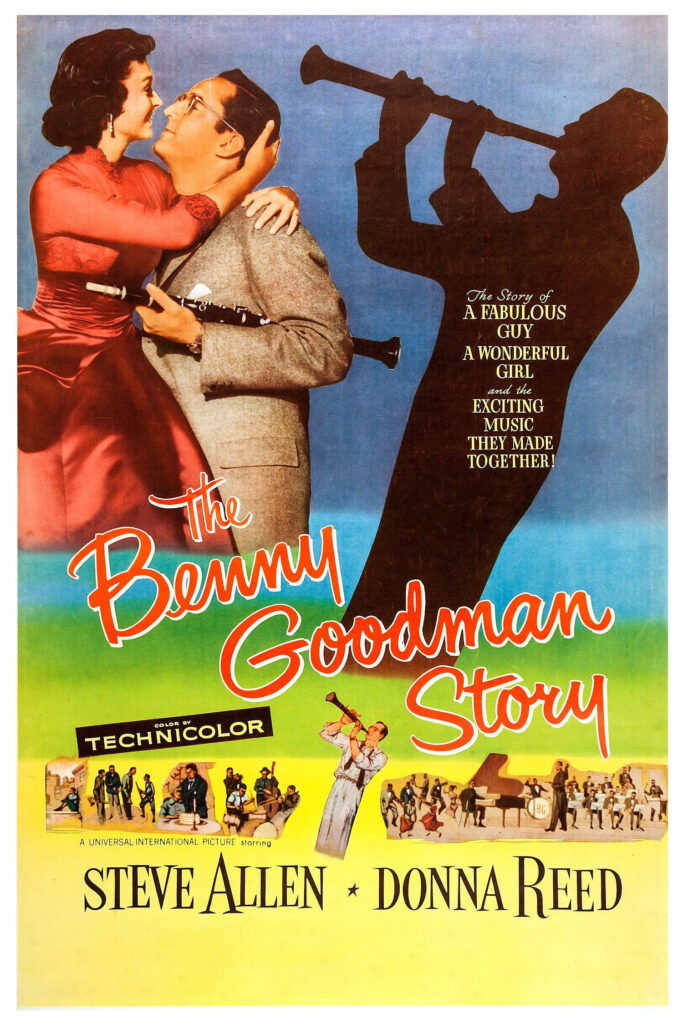
I’ve had the following article in my research files since 1986, when the article first appeared. It’s an obituary/tribute written for the Village Voice by writer Gary Giddens. It was published on July 8, 1986, shortly after Goodman died.
Benny Goodman materials in my collection
September 5, 2022, updated October 8, 2022
Cassettes
- Let’s Dance 1999 compilation
Compact discs
- The Hits of Benny Goodman Capitol 1989 cd
- The Essence of Benny Goodman Columbia/Sony 1991 cd
- The Original Benny Goodman Trio and Quartet Sessions Vol. 1 After You’ve Gone RCA / Bluebird 1987 cd
- Benny Goodman at Carnegie Hall 1938 Complete Columbia 1999 cd
- Benny Goodman Live at Carnegie Hall 40th Anniversary Concert 2 cd set. London 1978, 1986.
- The Blue Room, cd. TIM no date.
- Benny Goodman: The King of Swing 1998 Sugo Music cd
- The Best of the Big Bands: Benny Goodman Madacy1994
- Benny Goodman Yale Archives Vol. 6 Amerco/Musical Heritage Society 1991 cd
- Benny Goodman Rarities 1940-1942
- The Benny Goodman Sextet, featuring Charlie Christian (1939-1941)
- Benny Goodman, Vol. III / All the Cats Join In 1986 cd
- Benny Goodman Sextet 1988 cd
- Benny Goodman, Vol 1 (Yale University Music Library Series)
- Benny Goodman (Ken Burns Jazz) Sony 2000 cd
- Benny Goodman and His Orchestra: Sing, Sing, Sing 1987 cd RCA/BMG
LPs
- Benny Goodman, His Orchestra and Sextet, Vocals by Peggy Lee Columbia 10” lp CL 6033
- Columbia Presents The Great Benny Goodman Columbia lp CL 820
- Benny Goodman: Swing Into Spring Columbia XTV28995 Prepared expressly for Texaco
- The New Benny Goodman Sextet Columbia lp CL 552
- Together Again: The Benny Goodman Quartet RCA Victor LPM-2698 1964
- The Benny Goodman Story Decca Records DXB 188 2 lp set. I only have one of the lps, however.
- The Best of Benny Goodman: 30 Years of His greatest hits 4 record set Columbia House P4M 5678
- Benny Goodman–Lionel Hampton/Jazz Milestones (The Greatest Jazz Recordings of All time, vols. 37-40)
- Benny Goodman: Mostly Sextets Capitol T668
- The King of Swing, Vol. 1 1937-38 Jazz Concert No 2 Columbia lp CL 817
- Benny Goodman Trio and Quartet Live 1937-38 Columbia Special Products/Aimez Vous le Jazz No. 7
- Benny Goodman Trio and Quartet Vol. II (1937-38) Columbia Special Products/Aimez Vous le Jazz No. 15
- B.G from 1927-1934 Brunswick Records BL 54010
- The Benny Goodman Trio Plays for the Fletcher Henderson Fund Columbia lp, GL 516
- Benny Goodman 2 lp set (Time-Life Music: The Big Bands series STBB003)
- The Complete Benny Goodman, Vol. III 1936 2 record set Bluebird AXM2-5532
- BG: The Small Groups RCA Victor LPV-521 (RCA Victor Vintage Series)
- Benny In Brussels, featuring Jimmy Rushing, Vol. 1 Columbia lp CL1247
- The Famous 1938 Carnegie Hall Jazz Concert, Vol. 1 Columbia lp CL 814
7 inch 45 rpm EP’s
- Benny Goodman and His Orchestra
78’s
- My Blue Heaven / Put That Kiss Back Where You Found It
- On the Alamo / Rattle and Roll
- Don’t Be A Baby, Baby / All The Cats Join In
- My Guy’s Come Back / Symphony
- Six Flats Unfurnished / Why Don’t You Do Right?
- Idaho / Take Me
- The Way You Look Tonight / The Wang Wang Blues
- Heaven In My Arms / That Lucky Fellow
- Boy Meets Horn / Let’s Dance
- Where or When / I Cried For You
- A String of Pearls / Jersey Bounce
- He Ain’t Got Rhythm / This Year’s Kisses
- When It’s Sleepy Time Down South / Changes
- Let’s Give Love A Chance / Somebody Nobody Loves
- That Did It, Marie / Somebody Else Is Taking My Place
Books:
- Benny Goodman and the Swing Era, by James Lincoln Collier. NY: Oxford, 1989.
- Benny: King of Swing, a pictorial biography based on Benny Goodman’s own archives, with an introduction by Stanley Baron. NY: Morrow, 1979.
- Swing, Swing, Swing: The Life and Times of Benny Goodman, by Ross Firestone. NY: Norton, 1993.
Memorabilia and other stuff:
- Signed autograph black and white 8 x 10 portrait of Benny Goodman
- Ad: Benny Goodman Sextet Gammage Center, Sunday, February 20, 8pm. (Tempe, Az.)
- “The Mirror of Swing, by Gary Giddens. Village Voice July 8, 1986.
- “To Russia, Without Love: The Benny Goodman Tour of the USSR”, by Bill Crow. This is a 4 part story featured in Jazzletter (August, September, October November, 1962). Crow writes a critical review of the trip, and describes Goodman as a difficult bandleader and all around asshole. A very unflattering portrayal, to say the least.
- Newspaper ad, Arizona Daily Star May 2, 1940. Benny Goodman in person at the Santa Rita Ballroom, Friday, May 3, 1940
- Newspaper artcle, “Goodman Swings in City Tonight” Arizona Daily Star, May 3, 1940.
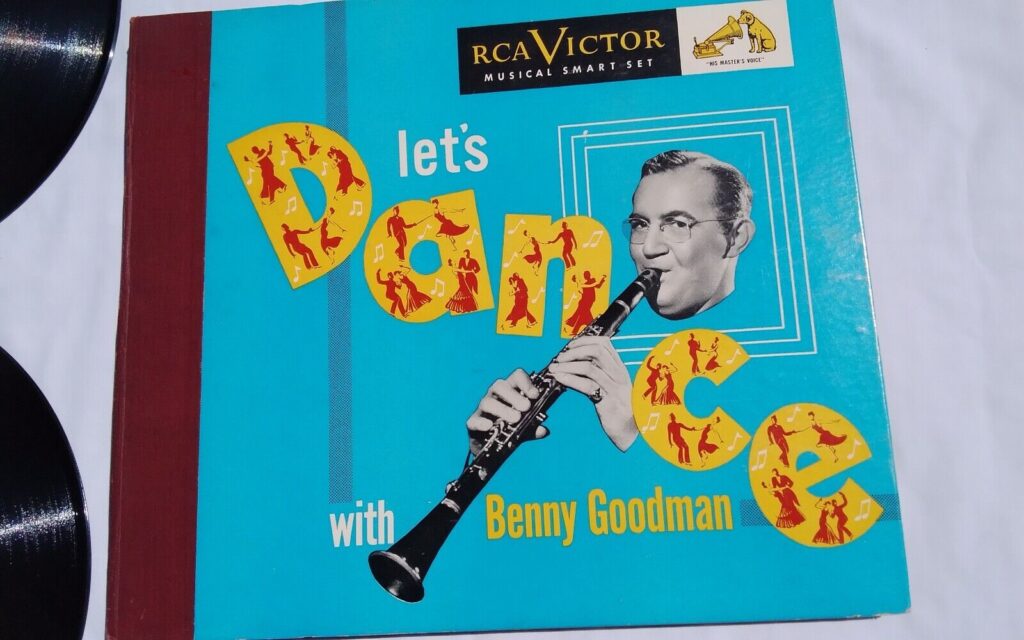
Gene Lees’ Jazzletter includes four issues devoted to Benny Goodman’s 1962 trip to Moscow. It’s not a very flattering portrayal, but from what I understand, this is how Goodman behaved with his band mates throughout his career as a band leader. His music was great, but he was not a nice guy. You can read about the tour by looking up the August, September, October and November 1986 issues of the newsletter.
For more information about Benny Goodman, see:
“Benny Goodman: The Official Website of the King of Swing”
“Benny Goodman Discography” in Discogs
“Ellington, Goodman, Shaw” by John S. Wilson, in Liberty Magazine, Spring, 1973. (I’ve had this magazine in my personal collection for many years, and only recently realized that there was a very good article on these three jazzmen included in it.
